Some Belated (and Extended) Thoughts on Halo Infinite
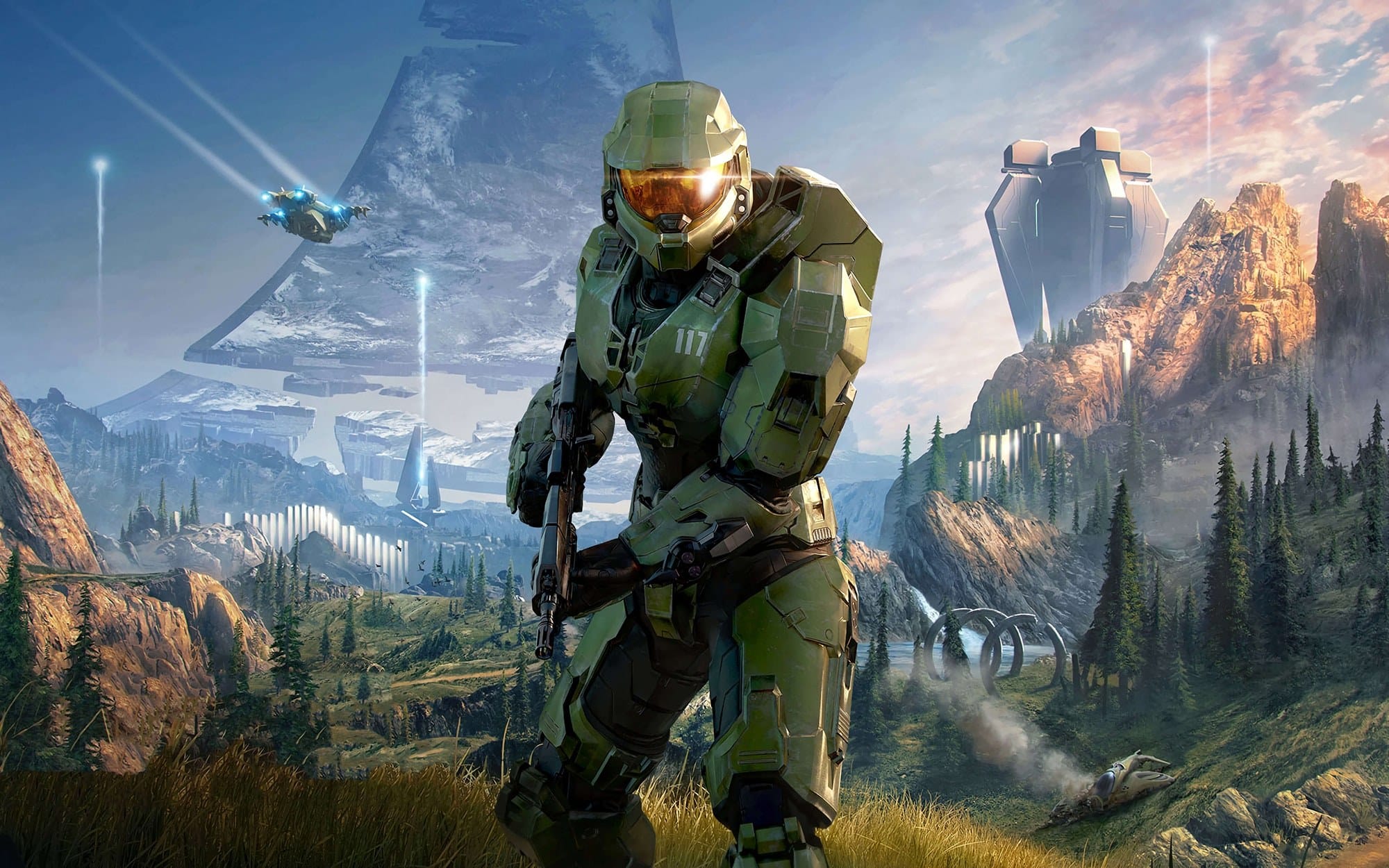
This isn’t going to be a review per se of Halo Infinite — plenty of critics have already weighed in on the game’s pros and cons — but after playing through the campaign several times since its release on December 8, 2021, I couldn’t not write something. Halo is arguably my favorite video game franchise of all time, thanks to its iconically implacable protagonist, well-designed gameplay, and immense (and convoluted) world building.
To put it simply, Halo Infinite left me wanting more — and I mean that in both good and bad ways. But mostly good. What follows is a random assortment of thoughts on the game. It’s long and very nerdy, and yes, it does contain spoilers.
Taking in the Sights of Zeta Halo
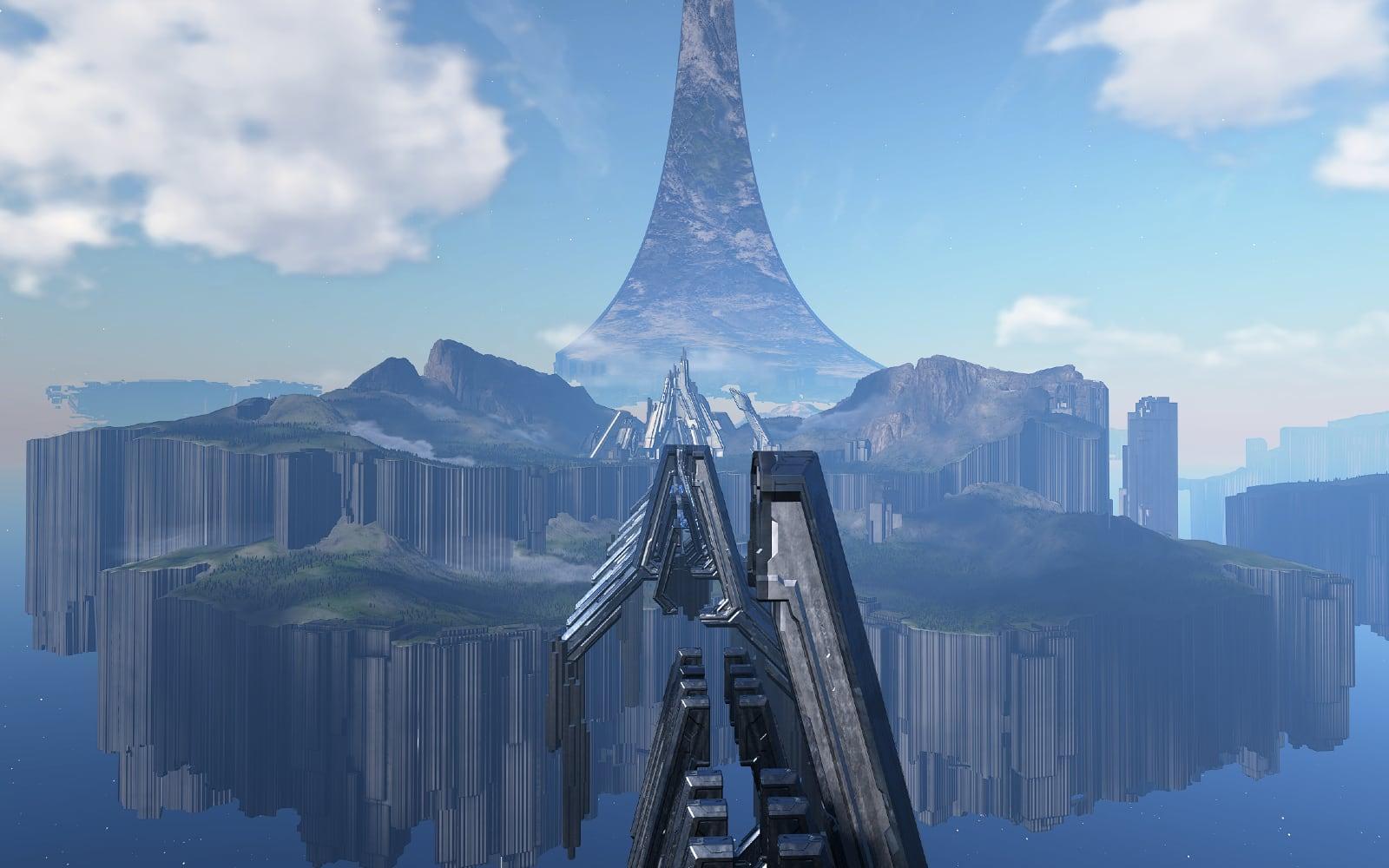
This may sound weird, but the Halo games have always been at their best when they leave you feeling your loneliest, dwarfed by incredible alien architecture and staring down impossible odds. That gives the games a sense of awe and scale, such as when you encounter yet another mind-boggling Forerunner construction, that’s a welcome respite from their sci-fi violence.
You might be the hero — a seven-foot-tall juggernaut encased in titanium power armor, to be precise — but Halo never lets you forget that you’re in the presence of alien forces that transcend human understanding.
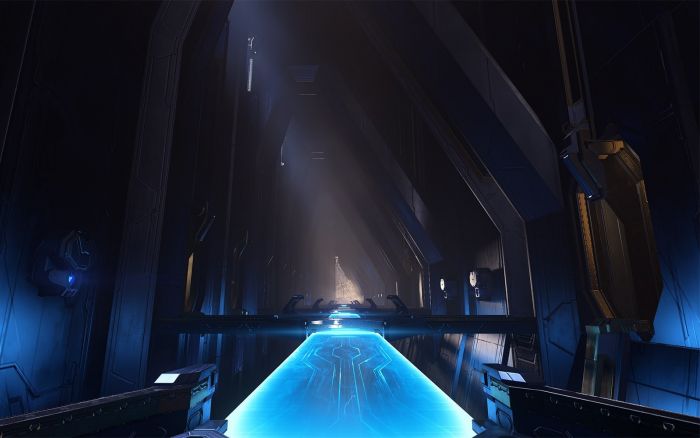
Halo Infinite takes this to the nth degree. The game is primarily set on Zeta Halo, the most mysterious of all the Halo rings in Halo lore; it’s filled with ancient secrets that go back a hundred millennia. But the massive ring was somehow shattered before your arrival, revealing the alien construction at its core.
In one of the game’s earliest levels, you wind your way through the ring’s underbelly, through vast caverns of ruined metal ravaged by electrical storms. An NPC describes it as both broken and beautiful, and he’s not wrong. I was occasionally reminded of the vast, broken, and awe-inspiring landscapes in Tsutomu Nihei’s landmark Blame! manga, which is my gold standard for that sort of thing.
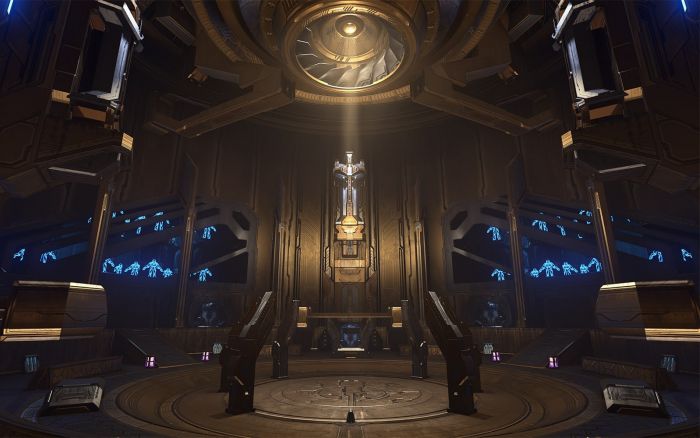
Later in the game, you must travel through vast Forerunner structures filled with the same geometrical architecture found in previous Halo games. In other words, there’s a lot that looks awfully familiar. But in Halo Infinite, that same architecture also possesses an antiquated and elegiac quality that gives the game a decidedly melancholy tone — as if it’s a shame that such beautiful and advanced, and ancient, structures are being soiled by war.
This is particularly evident as you make your way through massive, cathedral-like structures with names like the Repository and the Silent Auditorium. (Halo Infinite maintains the proud Halo tradition of ostentatious nomenclature.) Zeta Halo’s vast surface is also dotted with ruins and crumbling artifacts that only further hint at its ancient mysteries — mysteries that might even predate the Forerunners themselves.
The game’s gorgeous Zeta Halo setting — Halo Infinite is an incredibly good-looking game, even when played at a measly 30 fps on my Xbox One — almost made me wish that it was about exploration and discovery more so than combat, especially given its quasi-open world approach.

On more than one occasion, I was compelled to take a moment and drink in the game’s striking vistas: massive mountains bathed in a sunset’s golden light, pastoral fields strewn with flowers and butterflies, and waterfalls tumbling down through the ring’s exposed metal understructure, to name a few.
The Bad Guys
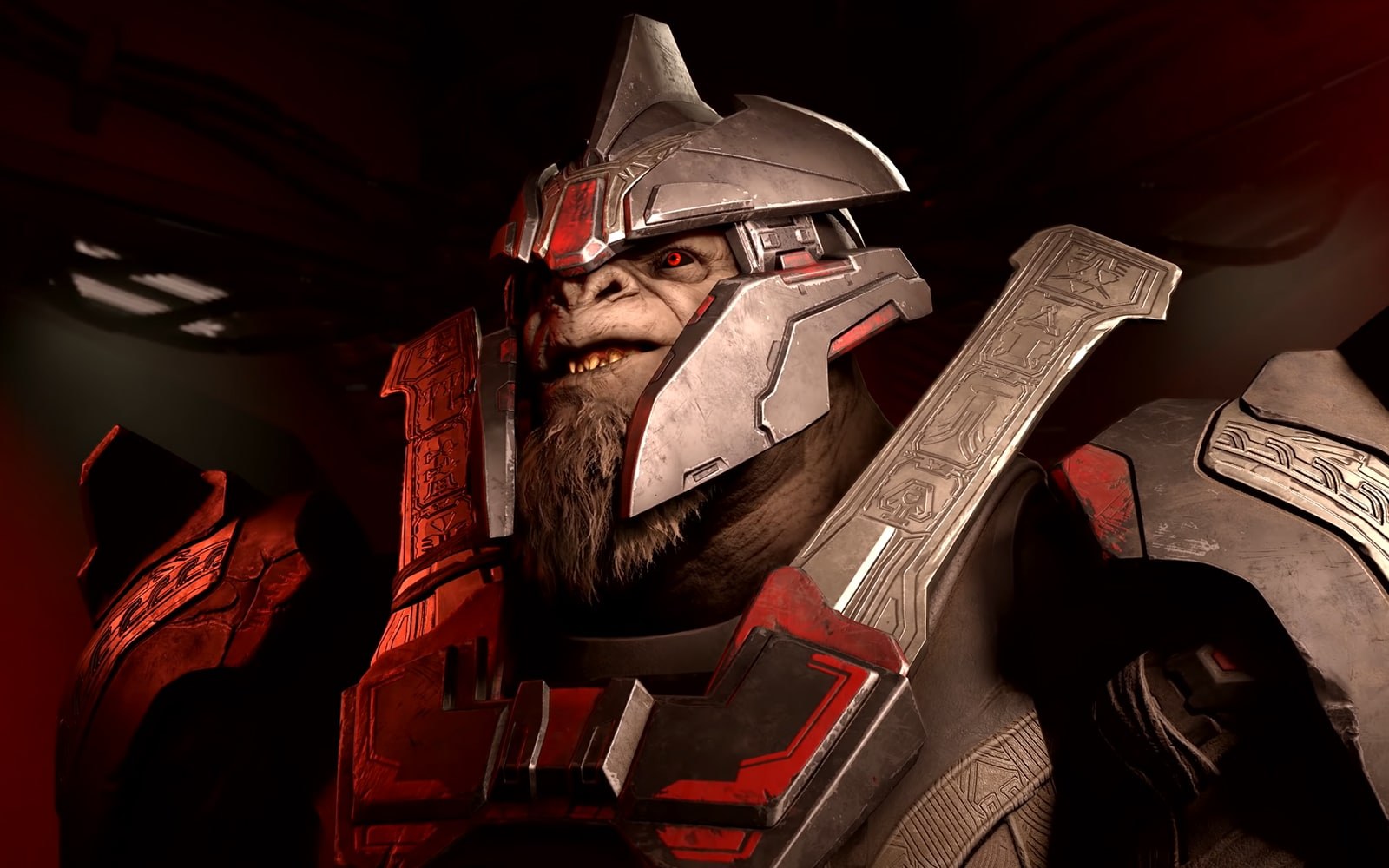
Halo Infinite is decidedly not a game about exploration, though. It never lets you forget that you’re a seven-foot-tall juggernaut encased in titanium power armor who has a very specific job to do. Which is kill a lot of aliens before they can use Zeta Halo’s devastating power against humanity. And I mean a lot of aliens.
Unfortunately, your enemies don’t quite compare to those found in previous Halo games.
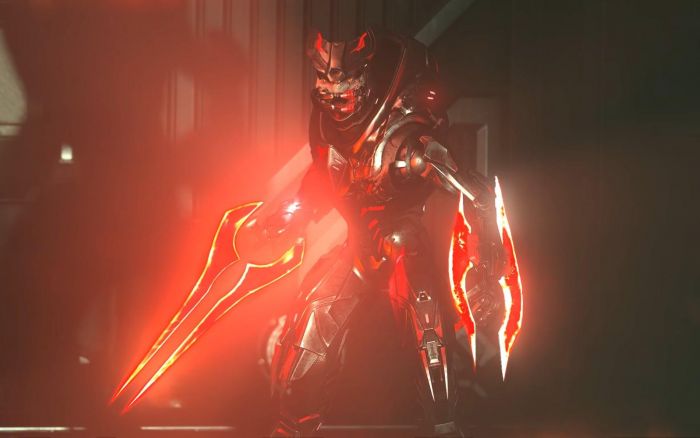
Previous Halo games had you battling the Covenant (an alien theocracy that considered the Halo rings holy relics) and the Flood (a virulent infestation that sought to consume all life in the galaxy). But in Halo Infinite, you face the Banished, a vicious military organization that arose from the Covenant’s ashes. Compared to the Covenant (who were fueled by religious zeal) and the Flood (which came with its own unique sense of horror), however, the Banished feel rather mundane and pedestrian.
The game does try to give the Banished some personality, with the most obvious example being the Grunts’ humorous dialog. But after awhile, the Grunts’ goofy propaganda feels like it belongs in an altogether different game, tone-wise. It’s also quite evident that the Banished hate the Covenant for deceiving and controlling them. But the constant declarations of “Banished good, Covenant bad” do get a little tedious. Even the revelation that Cortana destroyed the Brute home world of Doisac comes too late to imbue them with any sense of tragedy.
(On a sidenote, Halo lore maintains that the Banished have admitted humans into their ranks. Therefore, it might’ve been an interesting twist if, in addition to battling Brutes, Elites, Grunts, etc., you also found yourself battling traitorous humans. But as far as I know, there are no Banished-allied humans to be found on Zeta Halo. Maybe they’ll show up in a later installment.)
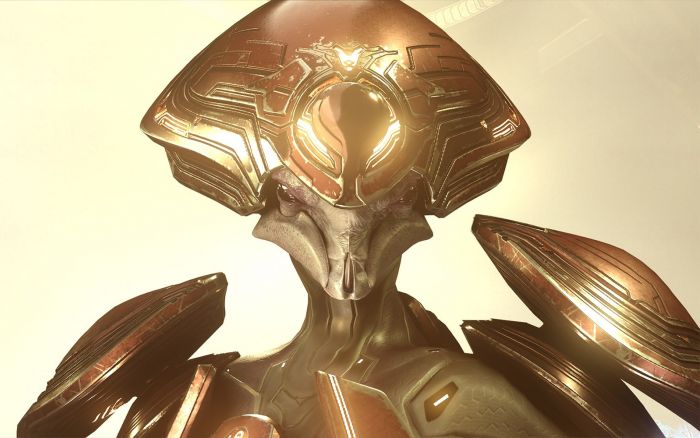
Halo Infinite banks heavily on boss battles, but there’s nothing particularly memorable there, either. The game’s primary antagonist is Escharum, a Brute who leads the Banished after their founder, Atriox, was presumably killed when Zeta Halo was fractured. Sadly, Escharum’s not a very compelling foe. His primary motivation is to simply go out in a blaze of glory, to fight the Master Chief in a battle for the ages. Which feels pretty meh, all things considered — and hard to take seriously given that he sounds a bit like Macho Man Randy Savage when he taunts you.
The Banished, however, are merely a prelude to what I suspect is Halo Infinite’s real enemy: a hitherto unknown alien race called the Endless that was imprisoned on Zeta Halo eons ago. In addition to battling Escharum and his forces, you must also contend with the Harbinger, who is intent on freeing the Endless from their Forerunner prison. Despite defeating her in the game’s final sequence, the Endless’ return is virtually assured in future installments.
Not surprisingly, there’s a lot of conjecture surrounding the Endless’ identity, their powers and abilities, and what they mean within the broader Halo lore. During one flashback in the game, Cortana casually mentions that Zeta Halo contains worse things than the Flood. It remains to be seen if that’s true of the Endless, from both narrative and gameplay perspectives.
Who needs a gun when you’ve got a Grappleshot?
Given that you’re a seven-foot-tall juggernaut encased in titanium power armor, Halo Infinite gives you a lot of ways to kill Banished, starting with the usual array of guns. In lieu of the DMR’s absence, I usually opted for the trusty Battle Rifle, with the Bulldog shotgun or Hydra missile launcher as my secondary weapon. And of course, I used the Sniper rifle whenever possible. Halo Infinite makes sure you never have to worry about running out of ammo; ammo dumps and recharge stations are all over the place, even improbably so, as are explosive energy canisters that can be lobbed at opponents like grenades.
However, Halo Infinite introduces one item that completely changes the game’s mechanics: the Grappleshot, a grappling hook that the Master Chief can shoot out from his wrist in order to climb and access hard-to-reach locations, snatch weapons, hijack vehicles, and best of all, attack and incapacitate enemies. (Indeed, the Grappleshot is so handy and fundamentally useful that I suspect I’ll instinctively try to use it whenever I play older Halo games.)

There’s nothing quite so satisfying in Halo Infinite as latching onto an enemy with the Grappleshot, stunning them with an electric charge, and zipping toward them to deliver a killing blow that sends them flying across the battlefield. (Halo 5 tried something like this with the Spartan’s “Ground Pound” maneuver, but the Grappleshot is waaaay better.) A close second would be stunning an enemy with a Grappleshot punch, then jumping back and sticking them with a plasma grenade — and watching them flail helplessly until the inevitable explosion.
In addition to the Grappleshot, the other big gameplay change is that the Chief doesn’t take any fall damage at all. You can fly a Wasp or Banshee as high as it’ll go, jump out of the cockpit, and land graceful as a cat despite falling a kilometer or two. While this makes it less frustrating to traverse some of Zeta Halo’s mountainous areas via Grappleshot, it can feel like cheating. It also renders one of the game’s major cutscenes, in which the Chief jumps out of an exploding Forerunner tower and free falls until he’s able to climb inside a Pelican, moot. With no fall damage, he could’ve just jumped to the ground and walked off into the sunset with nary a scratch on his armor.
Whither Cortana?
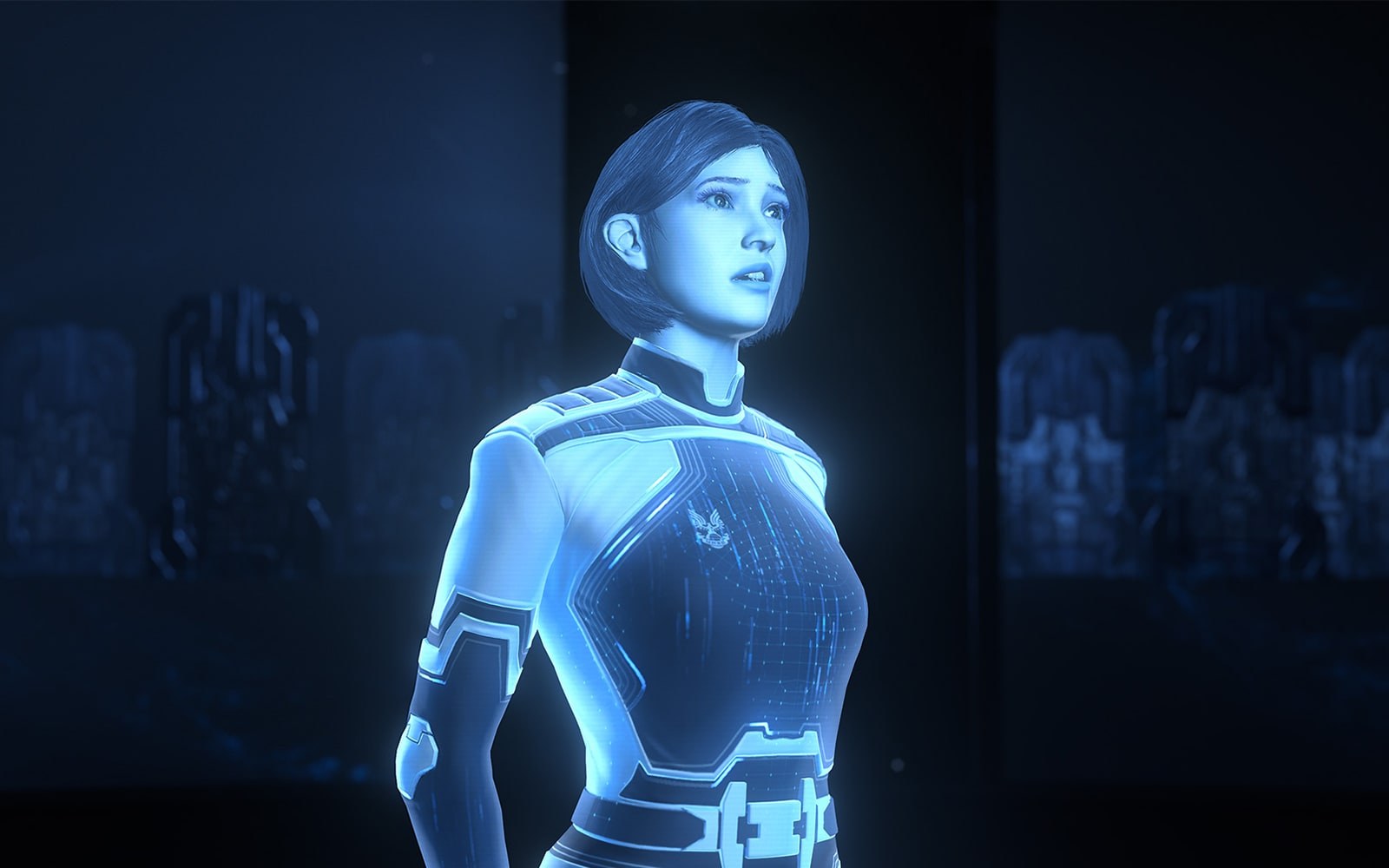
So… let’s talk about Cortana.
In Halo 4, Cortana began succumbing to rampancy, a sort of insanity that afflicts AIs in the Halo universe, and then ultimately sacrificed herself to save the Chief. She returned in Halo 5 thanks to some Forerunner technology, only to be revealed as the villain. Her plan was simple: turn the galaxy into a peaceful utopia that she ruled with an iron fist. Halo 5 ended on a desperate note, with the Chief and remnants of the UNSC on the run from Cortana.
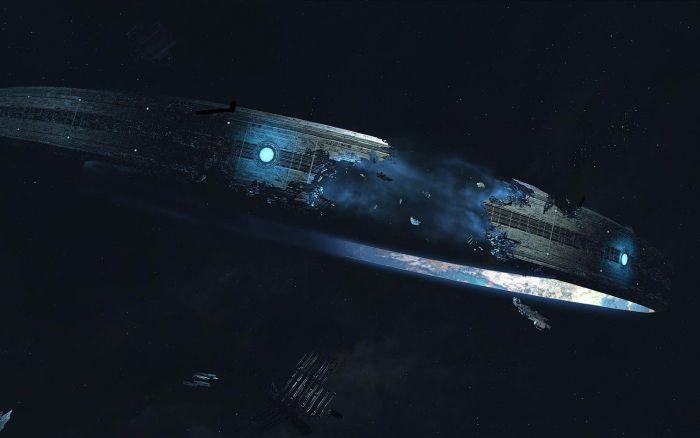
When you arrive on the fractured Zeta Halo, Cortana has already been defeated, though it’s unclear how. But since the Master Chief needs an AI companion, the game quickly introduces the Weapon. A very familiar-looking AI who gamely assists the Chief with his mission, the Weapon is — surprise! — a clone of Cortana who was created specifically to imitate, capture, and delete her predecessor. But when the Weapon’s own deletion protocols fail to activate upon completing her mission, she’s left unsure of her purpose until she meets the Chief.
Previous Halo games evolved the Chief and Cortana’s relationship from a tactical partnership into something with surprisingly intimate undertones. With the Weapon, however, the Chief often acts in a paternal manner, helping the younger, more naïve AI make sense of everything. (In his own taciturn way, of course.) But as the game progresses, the Chief, still stinging from Cortana’s betrayal and loss, reveals his deep suspicions of the Weapon given her origins. He’s even ready to delete her when it appears that she’s been compromised, an act that threatens to permanently destroy their burgeoning partnership.
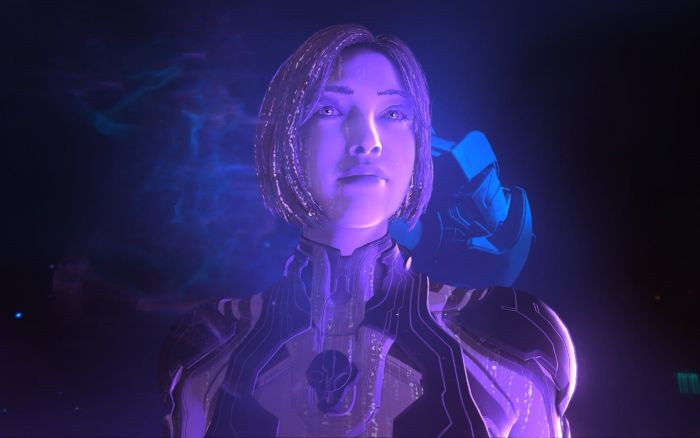
The twist, however, is that the Weapon doesn’t know she’s a clone of Cortana. Only after the truth of Cortana’s horrific deeds (like destroying Doisac) is revealed does she connect the dots. Horrified by Cortana’s actions, she asks the Chief to delete her lest she go down a similar path. But that’s actually the moment when the Chief finally begins to trust her, realizing that she deserves a chance to prove herself apart from Cortana’s legacy.
And then, another twist. As it turns out, the Weapon and the Chief’s partnership was engineered by Cortana herself. After being confronted by Zeta Halo’s truth, the Banished’s plans, and the apparent death of the Master Chief, Cortana comes to her senses and realizes her terrible mistakes. In her final moments, she shatters Zeta Halo to keep it from falling into Banished hands and then prevents the Weapon from deleting herself, knowing that the Chief will need the younger AI’s help in the coming fight.
As you make your way through the game’s final levels in the aforementioned Silent Auditorium, you encounter remnants of Cortana’s memories, the “dust and echoes” that remain following her deletion. This entire stretch feels like one, long farewell to Halo’s original AI. 343 Industries lays it on pretty thick here, particularly when Cortana’s echoes say things like “I owe all the happiness of my life to you” and “Everything is gone from me but the certainty of your goodness.” But it feels fitting, even necessary and cathartic, and I won’t deny finding the dead AI’s confessions rather affecting.
Your Other Allies
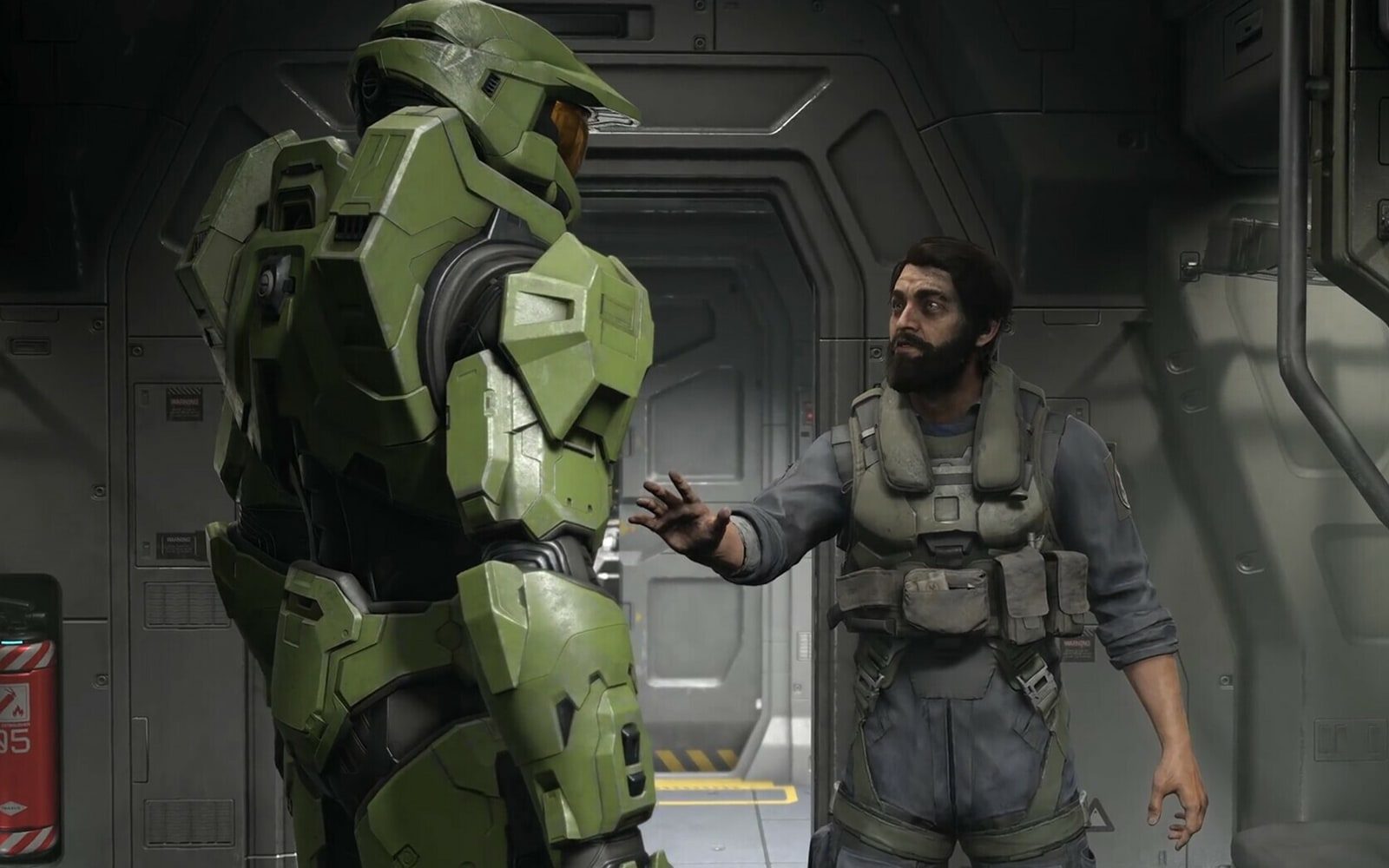
The Weapon isn’t the only one who joins the Chief’s side, though she’s probably the most enthusiastic about it. In contrast, Fernando Esparza — the Pelican pilot known as “Echo 216” who retrieves the Chief from the depths of space in the game’s opening sequence — wants nothing more than to leave Zeta Halo as quickly as possible. Unlike the Chief, Esparza isn’t a soldier. Rather, he’s a civilian contractor who tried to flee when the Banished ambushed the UNSC. Tried, and failed.
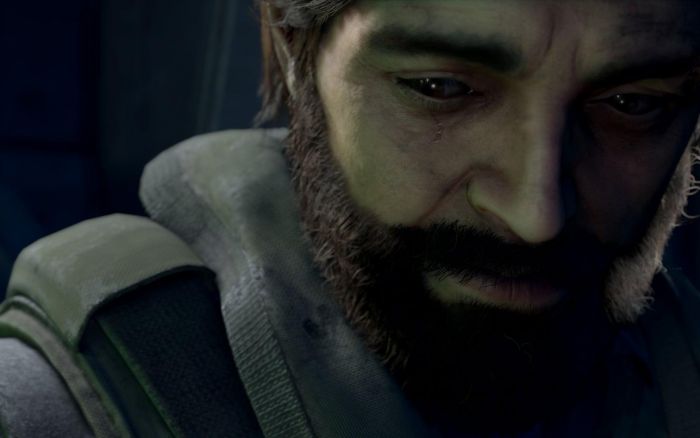
Esparza’s anxious nature is clearly intended to contrast the Master Chief’s stoicism, and it’s alternately effective and annoying. Let’s face it, most of us would probably be more like Esparza than the Chief (i.e., wetting our pants multiple times) were we faced with alien hordes bent on our destruction. At the same time, the Chief is the hero here, so the game clearly aligns with his motivations. As a result, there are moments when, unfairly perhaps, Esparza comes off as needlessly whiny and even cowardly. (On more than one occasion, Esparza’s protests had me really missing the dearly departed Sergeant Major Johnson.)
In addition to Esparza, the Chief also encounters UNSC forces scattered across Zeta Halo. Halo Infinite includes numerous side missions to rescue UNSC soldiers from Banished forces. Completing these missions earns you “Valor,” a sort of in-game credit that unlocks better weapons, vehicles, and soldiers to accompany you on your missions. These soldiers flock to your Forward Operating Bases (FOBs), which are UNSC outposts where you can access weapons and vehicles. (These soldiers can be pretty dumb, by the way. I often had to literally push them out of the way so they wouldn’t get crushed by my vehicle.)
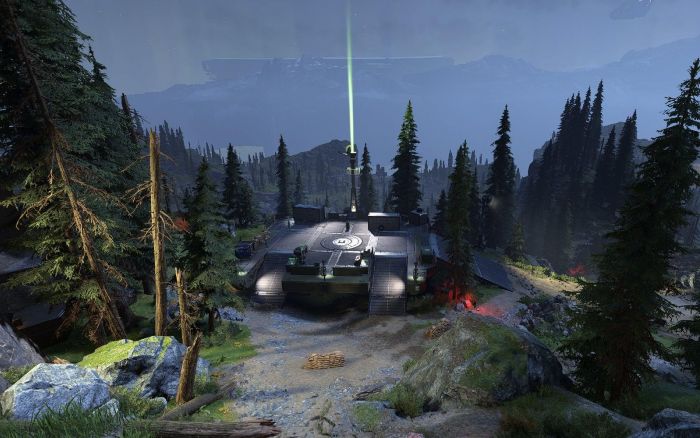
As you explore Zeta Halo’s vastness, you’ll occasionally discover evidence of previous UNSC activity. Empty sleeping bags, spare weapons and ammo, and other equipment indicate that, at some point, a UNSC soldier was there. These are often located in some of the ring’s most remote locations — high up in the mountains, hidden away in a cave, nestled down deep in a trench — and every time I see one, I can’t help wondering about the soldier who left it behind. Where are they now? What was their story? Were they on a mission and did they complete it? Or were they so harassed by the Banished that they had no choice but to seek shelter in such a forlorn place?
343 Industries undoubtedly included these to add some mystery to the game, which totally worked for me. As I mentioned earlier, the Halo games’ pervasive sense of loneliness is one of their best qualities, and it doesn’t get much lonelier than an abandoned UNSC sleeping bag in the middle of nowhere. Indeed, nothing communicates the Banished threat quite so well as the thought of a lone Marine all on their own, terrified and badly equipped, and trying to survive on Zeta Halo without any of the advantages that, say, a Spartan might have. (Some of that’s further hinted at in the audio logs that you’ll occasionally find, and which provide more info about what happened prior to the Chief’s arrival on Zeta Halo.)
Final Thoughts and Looking Ahead…
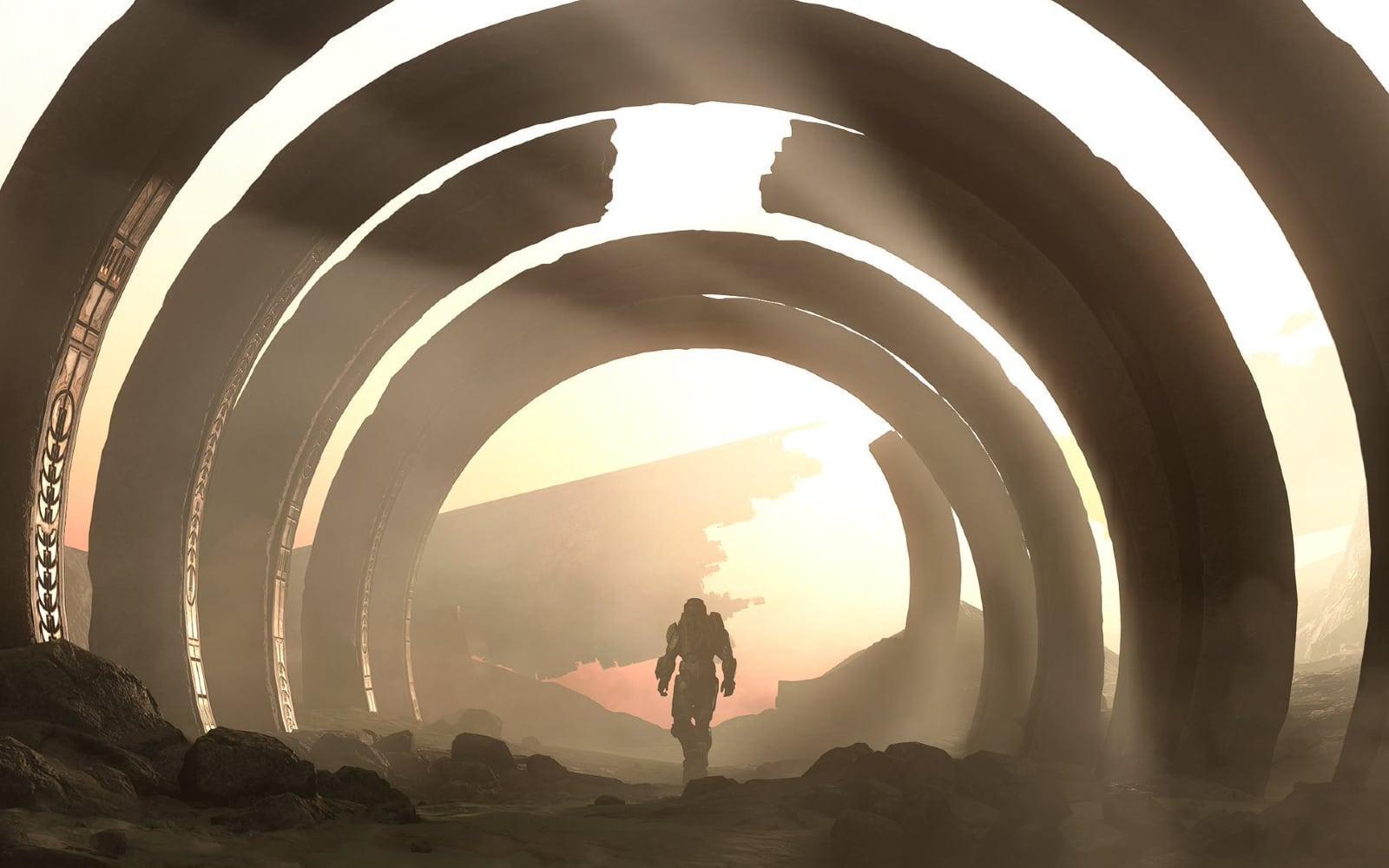
Given Halo Infinite’s scope, there’s plenty more that could be discussed. Like how the quasi-open world both adds to and subtracts from the game, expanding the world and filling it with things to discover while also making missions feel less urgent because you can do them whenever you want. Or how Gareth Coker, Joel Corelitz, and Curtis Schweitzer’s expansive soundtrack evolves the classic Halo elements (e.g., Gregorian chant, surging guitar riffs, tribal percussion) and incorporates some new ones, like synthwave textures (“Spire,” “Adjutant Resolution”) and otherworldly ambience (“Command Spire,” “Repository,” “Silent Auditorium”).
All that being said, I’m not going to lie: I was little underwhelmed by Halo Infinite after my first playthrough. I had a distinct sense of “That’s it?” when the credits began to roll. Upon further reflection, I suspect that’s due to Halo Infinite still needing to work through a lot of legacy franchise stuff (specifically Cortana’s heel turn in Halo 5). Halo Infinite can therefore feel like a bit of a retcon, not only of Halo 5, but of Halo 4 as well. (Which means, I suppose, that we’ll never really learn the full extent of what the Librarian did to the Chief in Halo 4.)
While that’s a bit disorienting at times, it also means that Halo Infinite has potentially freed the franchise from the “baggage” of previous games. The future’s finally wide open for Halo, even more so than at the end of Halo 3. Whether 343 Industries will be able to actually do something with this potential (e.g., deliver something interesting with the Endless in future installments) obviously remains to be seen, but I look forward to returning to Zeta Halo and finding out for myself.